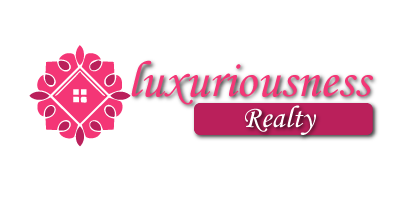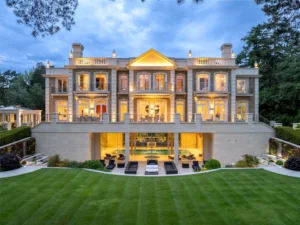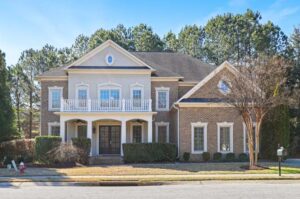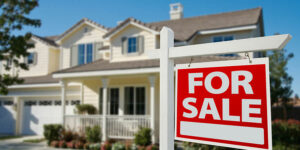Imagine walking through the cobblestone streets of Buenos Aires, where the vibrant tango rhythm fills the air, and the scent of freshly baked empanadas wafts from nearby cafes. You pass by historic, European-style buildings with wrought-iron balconies next to sleek, modern high-rises with glass façades that reflect the golden hues of a South American sunset. Amid this architectural mosaic, you notice a ‘For Sale’ sign on a stunning 19th-century mansion with an ornate facade and lush garden hidden behind a cast-iron gate. You begin to wonder: What does the real estate market in Buenos Aires look like today? From the cobbled streets of San Telmo to the upscale neighborhoods of Recoleta and Palermo, the real estate market in Buenos Aires offers a unique blend of old-world charm and modern luxury. But behind the city’s captivating facade lies a dynamic real estate market shaped by economic shifts, foreign investment, and local demand. Let’s delve into the current real estate landscape in Buenos Aires, examining key trends, market statistics, and investment opportunities in Argentina’s bustling capital.
The Buenos Aires Real Estate Market: An Overview
Buenos Aires, often called the “Paris of South America,” is known for its rich cultural heritage, diverse neighborhoods, and unique blend of architectural styles. The city’s real estate market reflects this diversity, offering everything from historic properties in San Telmo to modern condos in Puerto Madero. According to a 2023 report by the Buenos Aires Real Estate Chamber (Cámara Inmobiliaria Argentina), the market has shown signs of recovery after several challenging years marked by economic instability and the impact of the COVID-19 pandemic.
Key Market Trends in Buenos Aires Real Estate
Several trends are currently shaping the Buenos Aires real estate market:
- Currency Devaluation and Real Estate Prices: The Argentine peso has experienced significant devaluation over the past few years, leading many investors to seek refuge in real estate as a hedge against inflation. As a result, property prices in Buenos Aires have become more attractive, especially for foreign buyers. According to a 2023 report by La Nación, property prices in U.S. dollars have dropped by approximately 30% compared to their peak in 2017, making this an opportune time for international investors.
- Increased Foreign Interest: The favorable exchange rate has attracted foreign investors, particularly from the United States, Europe, and other Latin American countries. The Argentine government has also implemented policies to encourage foreign investment, such as easing restrictions on property purchases by non-residents. In 2023, foreign buyers accounted for approximately 18% of all real estate transactions in Buenos Aires, up from 12% in 2020, according to the Buenos Aires Property Observatory.
- Rise of New Developments and Modernization: While Buenos Aires is known for its historical charm, there has been a growing trend toward modern living spaces, particularly in neighborhoods like Palermo, Puerto Madero, and Belgrano. These areas have seen a surge in new developments, including luxury condos, high-rise apartments, and mixed-use buildings. A study by the Argentine Association of Real Estate Investors (AAIRE) indicated that new developments accounted for 25% of all property sales in Buenos Aires in 2023, reflecting a shift in buyer preferences towards modern amenities and contemporary designs.
- Demand for Larger Spaces and Green Areas: The COVID-19 pandemic has shifted buyer preferences towards properties that offer more space and access to green areas. There has been an increased demand for homes with gardens, terraces, and proximity to parks, especially in neighborhoods like Recoleta, Palermo, and Villa Urquiza. According to the Buenos Aires Property Market Review 2023, properties with outdoor spaces have seen a 15% increase in demand compared to the previous year.
Key Neighborhoods and Real Estate Hotspots in Buenos Aires
Buenos Aires is a city of distinct neighborhoods with character and appeal. Here are some of the most sought-after areas for real estate investment:
- Recoleta: Known for its French-style architecture, tree-lined streets, and proximity to cultural landmarks, Recoleta is one of the most prestigious neighborhoods in Buenos Aires. It is particularly popular among expatriates and wealthy locals. According to a report by Infobae, the average price per square meter in Recoleta was $3,000 in 2023, making it one of the most expensive areas in the city.
- Palermo: Palermo is the largest neighborhood in Buenos Aires and is divided into several sub-districts, including Palermo Soho and Palermo Hollywood. These areas are known for their vibrant nightlife, trendy boutiques, and gastronomic scene. The neighborhood has seen significant gentrification over the past decade, with new developments and rising property values. As of 2023, the average price per square meter in Palermo was $2,500, according to data from Property, a leading real estate platform in Argentina.
- Puerto Madero: Puerto Madero is the most modern and upscale neighborhood in Buenos Aires, featuring luxury high-rise apartments with stunning views of the river and city skyline. This area has attracted significant foreign investment due to its modern infrastructure and exclusive ambiance. The average price per square meter in Puerto Madero is $4,500, making it the most expensive neighborhood in Buenos Aires, according to the Argentine Real Estate Monitor.
- San Telmo: Known for its bohemian vibe and colonial architecture, San Telmo is a historic neighborhood that has become increasingly popular among young professionals and artists. The area offers a mix of old-world charm and modern amenities, with many properties being restored to their former glory. The average price per square meter in San Telmo is around $1,800, making it an affordable yet attractive option for investors looking for a neighborhood with character and potential for growth.
The Impact of Economic Policies on Real Estate
Argentina’s economic policies significantly influence the real estate Buenos Aires market dynamics. Several factors are currently influencing the market:
- Inflation and Interest Rates: Argentina has one of the highest inflation rates in the world, which affects both local and foreign investors. High inflation has led to higher mortgage rates, making financing more expensive for local buyers. However, the peso’s devaluation offers significant advantages for cash buyers, particularly foreigners. The Central Bank of Argentina reported that mortgage rates remained at an average of 38% in 2023, reflecting the challenging economic environment.
- Government Incentives for Real Estate Investment: To stimulate the real estate market, the Argentine government has introduced several incentives, including tax breaks for new developments and reduced capital gains taxes for foreign investors. These measures are aimed at attracting foreign capital and promoting urban development in key areas of the city.
Future Outlook and Investment Opportunities
The future of Buenos Aires’s real estate market looks promising, driven by several key factors:
- Continued Foreign Investment: With favorable exchange rates and government incentives, foreign investment in Buenos Aires real estate is expected to grow. A report by the World Bank predicts that Argentina’s economic growth will stabilize by 2025, creating a more favorable environment for long-term investments.
- Urban Development Projects: Buenos Aires has several large-scale urban development projects in the pipeline, including transforming former industrial areas into mixed-use developments. These projects are expected to boost property values and attract more buyers to emerging neighborhoods.
- Demand for Sustainable and Smart Homes: Buenos Aires has a growing trend towards sustainable and smart homes. Properties that offer energy-efficient features, smart home technology, and sustainable materials are becoming increasingly popular, particularly among younger buyers. According to a survey by the Buenos Aires Green Building Council, 35% of new developments in 2023 incorporated some form of sustainable technology, a trend that is likely to continue.
Conclusion
The Buenos Aires real estate market offers a unique blend of opportunities and challenges shaped by economic dynamics, foreign investment, and evolving buyer preferences. Whether you’re looking for a historic property in San Telmo, a luxury apartment in Puerto Madero, or a family home in Palermo, there is something for every investor in this vibrant city. With favorable conditions for foreign buyers and a market poised for growth, now may be the perfect time to explore the possibilities that Buenos Aires offers. As the city continues to evolve, its real estate market remains a dynamic and intriguing sector, reflecting Argentina’s broader economic and cultural shifts.






